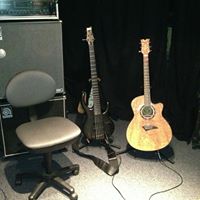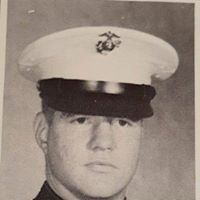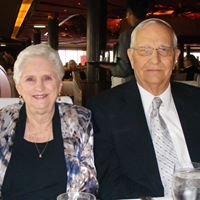Charles D Dykes
age ~69
from Williston, VT
- Also known as:
-
- Charlie D Dykes
Charles Dykes Phones & Addresses
- Williston, VT
- Milton, VT
- 249 Lawnwood Dr, Williston, VT 05495 • (802)8789042
Work
-
Position:Administrative Support Occupations, Including Clerical Occupations
Education
-
Degree:High school graduate or higher
Us Patents
-
Edge Dam Tensioning And Sealing Method And Apparatus For Twin-Belt Continuous Casting Machine
view source -
US Patent:49344412, Jun 19, 1990
-
Filed:Aug 12, 1987
-
Appl. No.:7/085270
-
Inventors:John F. B. Wood - Burlington VT
Timothy D. Kaiser - Colchester VT
Jerome B. Allyn - Colchester VT
Charles D. Dykes - Milton VT
Frank E. Kalaskie - Colchester VT
Robert J. Carmichael - Colchester VT
Charles R. Simon - Williston VT -
Assignee:Hazelett Strip-Casting Corporation - Colchester VT
-
International Classification:B22D 1106
-
US Classification:164452
-
Abstract:For closing gaps between blocks of a moving edge dam prior to its travelling downstream into the entrance of a moving mold defined between upper and lower revolving casting belts moving downstream from the mold entrance to its exit, the moving edge dam is initially elevated into a crest, as shown in FIGS. 12 and 14. This crest is above a plane generally defined by the lower casting belt travelling downstream. Then, a guide roller positioned above thrusts downwardly upon the moving edge dam bending it convex downwardly as shown at "B" in FIG. 14 for causing its dam blocks to press against each other for sliding them along their high strength endless flexibile carrying member, thereby closing gaps between the blocks entering the mold entrance for sealing the entrance against outward leakage of molten metal between blocks. The downward convex bending also produces desired downward pressure of the moving edge dam against the lower casting belt, thereby enhacing sealing action between moving edge dam and lower belt. The downward thrust of this roller is sensed for indicating the amount of tension in the endless flexible carrying member of the moving edge dam.
-
Method For Determining Molten Metal Pool Level In Twin-Belt Continuous Casting Machines
view source -
US Patent:48134716, Mar 21, 1989
-
Filed:May 5, 1988
-
Appl. No.:7/190364
-
Inventors:Timothy D. Kaiser - Colchester VT
Sabah S. Daniel - Pittsburgh PA
Charles D. Dykes - Milton VT -
Assignee:Hazelett Strip-Casting Corporation - Colchester VT
USX Corporation - Pittsburgh PA -
International Classification:B22D 1118
-
US Classification:164451
-
Abstract:A method for determining level of molten metal in the input of a continuous metal casting machine having at least one endless, flexible, revolving casting belt with a surface which engages the molten metal to be cast and a reverse, cooled surface along which is directed high velocity liquid coolant includes the steps of predetermining the desired range of positions of the molten metal pool and positioning at least seven heat-sensing transducers in bearing contact with the moving reverse belt surface and spaced in upstream-downstream relationship relative to belt travel spanning the desired pool levels. A predetermined temperature threshold is set, somewhat above coolant temperature and the output signals of the transducer sensors are scanned regarding their output signals indicative of temperatures of the moving reverse belt surface. Position of the molten pool is determined using temperature interpolation between any successive pair of upstream-downstream spaced sensors, which follows confirmation that two succeeding downstream sensors are at temperature levels exceeding threshold temperature. The method accordingly provides high resolution for determining pool position, and verifies the determined position by utilizing full-strength signals from two succeeding downstream sensors.
-
Edge Dam Synchronization And Tensioning Control Method And System For The Shaping And Profiling Of Continuously Cast Metal Sections By Means Of A Continuous Casting Machine
view source -
US Patent:46948996, Sep 22, 1987
-
Filed:Dec 3, 1986
-
Appl. No.:6/937319
-
Inventors:John F. B. Wood - Burlington VT
Timothy D. Kaiser - Colchester VT
Jerome B. Allyn - Colchester VT
Charles D. Dykes - Milton VT
Frank E. Kalaskie - Colchester VT
Robert J. Carmichael - Colchester VT
Charles R. Simon - Williston VT -
Assignee:Hazelett Strip-Casting Corporation - Colchester VT
-
International Classification:B22D 1106
B22D 1116 -
US Classification:164452
-
Abstract:A method and system are provided for synchronizing the travelling edge dams in the continuous casting of metal slab, strip, or bar, thereby providing a means for the continuous uniform casting of longitudinally spaced edge shapes, contours, or profiles such as integral shoulders, lugs, lobes, depressions, curves, or indentations in the opposite edges of the cast product. Shapes include the protruding lugs, cast directly opposite each other, for suspending copper anodes in electrolytic refining-also the intruding, material-saving contours in the tops of anodes. A belt-type continuous casting machine is shown wherein two moving contoured edge dam loops each comprise blocks strung upon flexible endless metal straps. The moving edge dams on each side of the mold must be synchronized, regardless of disturbing thermal variations notably. "Back breakers" exert upward rolling contact force controllably and separately against each moving edge dam loop along its return path, thereby changing the local curvature and so adjusting the degree of mutual compression and closeness of the constituent dam blocks or the end-to-end spacing of the same.
-
Twin-Belt Continuous Caster With Containment And Cooling Of The Exiting Cast Product For Enabling High-Speed Casting Of Molten-Center Product
view source -
US Patent:49017853, Feb 20, 1990
-
Filed:Jul 25, 1988
-
Appl. No.:7/224058
-
Inventors:Charles D. Dykes - Milton VT
Sabah S. Daniel - Pittsburgh PA
J. F. Barry Wood - Burlington VT -
Assignee:Hazelett Strip-Casting Corporation - Colchester VT
USX Corporation - Pittsburgh PA -
International Classification:B22D 1106
B22D 1124 -
US Classification:164481
-
Abstract:In continuously casting molten metal into cast product by a twin-belt machine, it is desirable to achieve dramatic increases in speed (linear feet per minute) at which cast product exits the machine, particularly in installations where steel cast product is intended to feed a downstream regular rolling mill (as distinct from a planetary mill) operating in tandem with the twin-belt caster. Such high-speed casting produces product with a relatively thin shell and molten interior, and the shell tends to bulge outwardly due to metallostatic head pressure of the molten center. A number of cooperative features enable high-speed, twin-belt casting: (1) Each casting belt is slidably supported adjacent to the caster exit pulley for bulge control and enhanced cooling of cast product. (2) Lateral skew steering of each belt provides an effective increase in moving mold length plus a continuity of heat transfer not obtained with prior art belt steering apparatus. (3) The exiting slab is contained and supported downstream from the casting machine to prevent bulging of the shell of the cast product, and (4) spray cooling is incorporated in the exit containment apparatus for secondary cooling of cast product.
-
Steering, Tensing And Driving A Revolving Casting Belt Using An Exit-Pulley Drum For Achieving All Three Functions
view source -
US Patent:60268875, Feb 22, 2000
-
Filed:Mar 4, 1997
-
Appl. No.:8/810414
-
Inventors:Charles D. Dykes - Williston VT
J. F. Barry Wood - Burlington VT
Charles R. Simon - Williston VT
R. William Hazelett - Colchester VT -
Assignee:Hazelett Strip-Casting Corporation - Colchester VT
-
International Classification:B22D 1106
-
US Classification:164481
-
Abstract:Steering, tensioning and driving a revolving metallic casting belt in continuous casting machines wherein the belt travels along a generally straight casting plane P. Two two-axis robotic mechanisms are positioned at opposite ends of an exit-pulley drum, each including a "floating" housing carrying a bearing rotatably supporting a journal at the respective drum end. A drive shaft connected to one of the journals rotates the drum for revolving the belt. The robotic mechanisms adjustably position opposite ends of a rotating drum in X--X plane parallel with plane P for tensioning the belt and in Y--Y plane perpendicular to plane P for steering the revolving belt. These robotic mechanisms are controlled to operate in any of several modes: (1) "Walking-tilt" steering keeps the belt much closer to an exiting product than prior art, the belt being flatter and in better contact with the product for improving casting speed and quality. Mode (2) provides a "virtual squaring shaft" causing a drum to simulate being constrained by a rigid mechanical squaring shaft for synchronizing downstream movements of both drum ends for regularizing tension fully across a "cylindrical" casting belt. In modes (3), (4) and (5) the rigidity of the virtual squaring shaft may be "softened," or re-zeroed or eliminated, to accommodate small "frustro-conical" errors in belt manufacture.
-
Method And Apparatus For Setting Precise Nozzle/Belt And Nozzle/Edge Dam Block Gaps
view source -
US Patent:48300896, May 16, 1989
-
Filed:May 5, 1988
-
Appl. No.:7/190585
-
Inventors:Robert J. Carmichael - Colchester VT
Charles D. Dykes - Milton VT
Ronald Woodrow - Saltsburgh PA -
Assignee:Hazelett Strip-Casting Corporation - Malletts Bay, Colchester VT
USX Corporation - Pittsburgh PA -
International Classification:B22D 1106
B22D 1110 -
US Classification:164481
-
Abstract:A pair of guide pins are mounted on sideplate extensions of the caster and mating roller pairs are mounted on the nozzle assembly. The nozzle is advanced toward the caster so that the roller pairs engage the guide pins. Both guide pins are remotely adjustable in the vertical direction by hydraulic cylinders acting through eccentrics. This moves the nozzle vertically. The guide pin on the inboard side of the caster is similarly horizontally adjustable. The nozzle roller pair which engage the inboard guide pin are flanged so that the nozzle moves horizontally with the inboard guide pin.
-
System And Method For Continuous Casting
view source -
US Patent:20180290204, Oct 11, 2018
-
Filed:Apr 5, 2018
-
Appl. No.:15/945844
-
Inventors:CHARLES D DYKES - WILLISTON VT, US
VALERY G KAGAN - COLCHESTER VT, US
DOUGLAS A HAMILTON - SHELBURNE VT, US
CASEY J DAVIS - WILLIAMSTOWN VT, US
JOHN E PENNUCCI - COLCHESTER VT, US -
Assignee:HAZELETT STRIP-CASTING CORPORATION - Colchester VT
-
International Classification:B22D 11/06
-
Abstract:A continuous casting apparatus includes a first belt carried by a first upstream pulley and a first downstream pulley, a second belt carried by a second upstream pulley and a second downstream pulley, and a mold region defined by a first mold support section arranged behind the first belt and a second mold support section arranged behind the second belt. The first mold support section supports the first belt and defines a shape of the first belt in the mold region and the second mold support section supports the second belt and defines a shape of the second belt in the mold region. At least one of the first mold support section and the second mold support section includes a transition portion and a generally planar portion downstream from the transition portion. The transition portion has a variable radius configured to receive molten metal from a metal feeding device.
Resumes

Charles Dykes
view source
Charles Dykes
view source
Charles Dykes
view sourceFlickr

Charles Dykes
view source
Charles Donald Dykes
view source
Charlie Dykes
view source
Charles Dykes
view source
Charles Dykes
view source
Charles Dykes
view source
Charles Eugene Dykes
view source
Charles Dykes
view sourceClassmates

Charles Dykes
view sourceSchools:
Sneads High School Sneads FL 1991-1995
Community:
Jerry Winters, Helen Gilley

Charles Dykes
view sourceSchools:
Pike Liberal Arts High School Troy AL 1970-1974
Community:
Ceiara Smith, Donny Hagler

Charles Dykes
view sourceSchools:
Pearl Rucker Elementary School Houston TX 1968-1972

Charles Dykes
view sourceSchools:
East Technical High School Cleveland OH 1974-1978

Ketron High School, Kings...
view sourceGraduates:
Charles Dykes (1966-1970),
Linda Addison (1972-1976),
Fay Hommel (1965-1969),
Penny Hillman (1976-1980),
Patrick Perry (1970-1974),
Steve Brewster (1972-1976)
Linda Addison (1972-1976),
Fay Hommel (1965-1969),
Penny Hillman (1976-1980),
Patrick Perry (1970-1974),
Steve Brewster (1972-1976)

Pearl Rucker Elementary S...
view sourceGraduates:
Esmeralda Flores (1990-1993),
Charlie Crawford (1968-1972),
Charles Dykes (1968-1972),
Angelica Marroquin (1989-1995)
Charlie Crawford (1968-1972),
Charles Dykes (1968-1972),
Angelica Marroquin (1989-1995)

Pike Liberal Arts High Sc...
view sourceGraduates:
Denise Garrett (1985-1989),
Charles Newman (1989-1993),
Rebecca Jeffrey (1995-1999),
Derek Broderway (1999-2003),
Charles Dykes (1970-1974)
Charles Newman (1989-1993),
Rebecca Jeffrey (1995-1999),
Derek Broderway (1999-2003),
Charles Dykes (1970-1974)

Macon State College, Maco...
view sourceGraduates:
Charles Dykes (1998-2002),
Tammy Woodberry (1993-1998),
Kerri Carter (1992-1996),
Lacarrious Manuel (2000-2005)
Tammy Woodberry (1993-1998),
Kerri Carter (1992-1996),
Lacarrious Manuel (2000-2005)
Plaxo

Charles Dykes
view sourceAutin, TXAgency Principal at @vibe media
Youtube
Googleplus

Charles Dykes

Charles Dykes

Charles Dykes

Charles Dykes
Myspace
Get Report for Charles D Dykes from Williston, VT, age ~69














